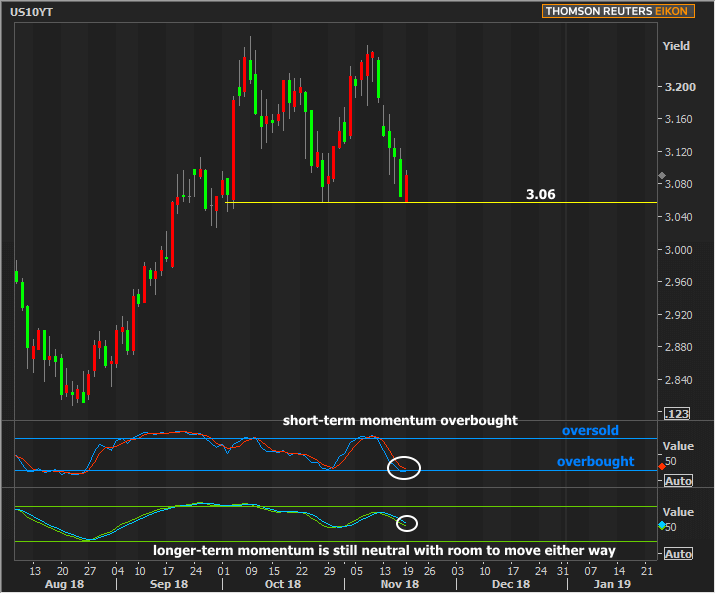Happy Thanksgiving week. These can go a few different ways for bond markets with 2 main varieties standing out. Both varieties are the product of illiquidity (fewer buyers and sellers at any given price point). In the first case, those buyers and sellers are roughly balanced and neither side has an stubborn/desperate outlier. The result is a boring, sideways grind for 3 days followed by a forgotten half-day on Friday.
In the second case, there is an outlier or two who is stubborn or desperate--a buyer with big buying needs or a seller who isn't willing to give up their bonds without getting top dollar. In an illiquid environment, such outliers can quickly drive prices/yields higher or lower. The most frustrating part of watching such things happen (well, I guess it's only frustrating to us if rates are moving higher) is that there's usually not an apparent motivation for the move. It's purely tradeflow driven.
In the frustrating case, bond yields would simply move back up into their prevailing range. Not pleasant, but not a big deal in terms of implications. In the more positive case, yields would need to break their recent intraday lows at 3.06% before we could even consider something other than a slow, holiday trading week.

There are key levels in stocks as well, and a breakout could inform momentum for bonds, to some extent. Stocks aren't nearly as close to their technical lines, so the mere process of getting there would be somewhat meaningful in and of itself. Simply put, if stocks were to break below the lower consolidation line (upwardly sloped gray line) it would likely coincide with bonds breaking below 3.06%.

Data and events are fairly sparse, with Wednesday being the only day with a fair amount of economic reports. Of those, I'd normally say Durable Goods would be the headliner, but in this case, I'm not sure there is a headliner. The exception would occur if, by some miracle, Durable Goods data manages to come in above 0.0. It's currently seen coming in 2.5% lower.





